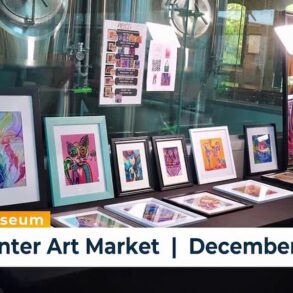
“Art prices have not shot up in the way that certain other asset prices have shot up,” he says. “And if you are [investing] in the Magnificent Seven, frankly nothing in the art world is really going to compete with that.”
And yet the fact that wealthy people have not continued to pour money into art at the same proportionate pace could be a sign that softness in the super-high-end blue-chip market will continue.
“In the last year or so, we’re seeing the base doing better than the top of the pyramid, in terms of art sales,” says Clare McAndrew, who founded the research and consulting firm Arts Economics and prepared the report.
“It’s kind of thought about in a negative way, because you just see that the top-line figure is dropping for the big auction houses. But the base is getting bigger, and that means more transactions are happening. They’re just not very expensive, secondary-market ones,” McAndrew points out.
The report also highlights the multitrillion-dollar generational wealth transfer that will occur over the next few decades, offering a nuanced appraisal of how that transfer might occur in the art market.
Specifically, older rich people are transferring their art to their heirs. Some 91% of high net worth individuals owned work that was inherited or gifted (so much for self-made collectors); but of these respondents, about three-quarters planned to sell at least some of the work they’d received.
In that group of sellers, roughly half planned to sell some inherited art because of a lack of space; a similar percentage planned to use the proceeds of the sales to help settle estate taxes.
Wealth transfer might translate into more young people being able to buy art, in other words, but it could also represent significant amounts of unwanted inherited inventory hitting the market, which could suppress prices.
The Bad News
In 2023, as the art market began to slump in earnest, millennials decreased their average spending on art by as much as 50%, according to the report. This flips previous narratives about the rising dominance of young collectors on its head.
“It’s always been millennials and younger collectors really pushing the highest spenders, and they were the ones that kind of cooled off in the last year,” McAndrew says, noting that older, Gen X collectors’ spending stayed about even from 2022 to 2023.
But it’s not just millennials. Only 43% of high net worth individuals said they planned to purchase a work of art in the next 12 months (down from about 50% in 2022 and 2023), and those hoping to sell works jumped to 55%.
Of the Art Basel VIPs, the numbers were more encouraging — 97% planned to purchase an artwork of some kind in the next 12 months — but even among the die-hards there were some warning signs.
They planned to attend both fewer gallery shows and fewer art fairs in 2024 than in pre-Covid 2019, even though nearly 90% of VIP respondents said they “strongly favored” buying art in person, meaning potentially fewer opportunities for art transactions to take place.
Overall, the report paints the picture of a fairly flat art market supported by a collector base on the precipice of serious change.
“The art industry as a whole is still doing relatively well,” Donovan says. “The volume of transactions isn’t down, but it’s just different transactions are taking place now.” It is, he continues, “a structural shift.”
(Credit: Adobe Stock)







